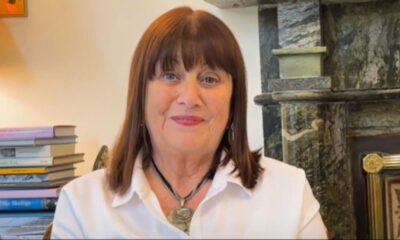Health
Professor O’Neill Explains How Winter Impacts Mental Health

Professor Luke O’Neill recently discussed the impact of winter on mental health, particularly focusing on Seasonal Affective Disorder (SAD). This condition, which manifests during the darker months, significantly affects individuals, with severity ranging from mild symptoms to more pronounced depression.
First identified approximately fifty years ago in northern Europe, SAD affects about one in every one hundred people severely, while up to one in five may experience milder symptoms. The prevalence of this disorder varies by geography; for instance, only around 1% of residents in Florida report symptoms, compared to a stark 10% in regions like Alaska. In Ireland, approximately 7% of the population experiences significant effects each winter.
Understanding the Mechanisms Behind SAD
Professor O’Neill explained that the primary issue stems from reduced sunlight during winter months. “All the evidence suggests – and it makes sense – that it would be the dimmer light that is the problem,” he stated. He elaborated on how regions farther north, like Tromsø in Norway, experience extreme darkness, where the sun does not rise for weeks during winter.
The lack of sunlight disrupts our circadian rhythms, the internal clocks that regulate our daily biological processes. This disruption can lead to imbalances in key hormones such as melatonin, which governs sleep, and serotonin, which influences mood.
Effective Treatments for SAD
Fortunately, light therapy has emerged as a promising treatment for those suffering from SAD. According to Professor O’Neill, studies indicate a response rate between 60% and 90% for individuals using light therapy daily. “More than 80% of people with SAD who had light therapy reported relief from their symptoms,” he noted.
Research suggests that spending just 30 minutes in front of a light source emitting 10,000 lux can effectively reset the body clock and alleviate symptoms. For context, moonlight offers a mere 1 lux, standard indoor lighting provides about 300 lux, while a bright winter’s day can reach up to 20,000 lux.
For individuals experiencing any form of depression, Professor O’Neill recommends consulting with a general practitioner to discuss symptoms and potential treatment options.
As winter approaches, awareness of conditions like SAD becomes increasingly important. Understanding the effects of reduced sunlight and the availability of effective treatments can help many navigate these darker months with greater resilience.
-

 Top Stories2 months ago
Top Stories2 months agoTributes Surge for 9-Year-Old Leon Briody After Cancer Battle
-

 Entertainment4 months ago
Entertainment4 months agoAimee Osbourne Joins Family for Emotional Tribute to Ozzy
-

 Politics4 months ago
Politics4 months agoDanny Healy-Rae Considers Complaint After Altercation with Garda
-

 Top Stories3 months ago
Top Stories3 months agoIreland Enjoys Summer Heat as Hurricane Erin Approaches Atlantic
-

 World4 months ago
World4 months agoHawaii Commemorates 80 Years Since Hiroshima Bombing with Ceremony
-

 Top Stories2 months ago
Top Stories2 months agoNewcastle West Woman Patricia Foley Found Safe After Urgent Search
-

 Top Stories4 months ago
Top Stories4 months agoFianna Fáil TDs Urgently Consider Maire Geoghegan-Quinn for Presidency
-

 World4 months ago
World4 months agoCouple Convicted of Murdering Two-Year-Old Grandson in Wales
-

 World4 months ago
World4 months agoGaza Aid Distribution Tragedy: 20 Killed Amid Ongoing Violence
-

 World4 months ago
World4 months agoAristocrat Constance Marten and Partner Convicted of Infant Murder
-

 Top Stories3 months ago
Top Stories3 months agoClimbing Errigal: A Must-Do Summer Adventure in Donegal
-

 Top Stories3 months ago
Top Stories3 months agoHike Donegal’s Errigal Mountain NOW for Unforgettable Summer Views









